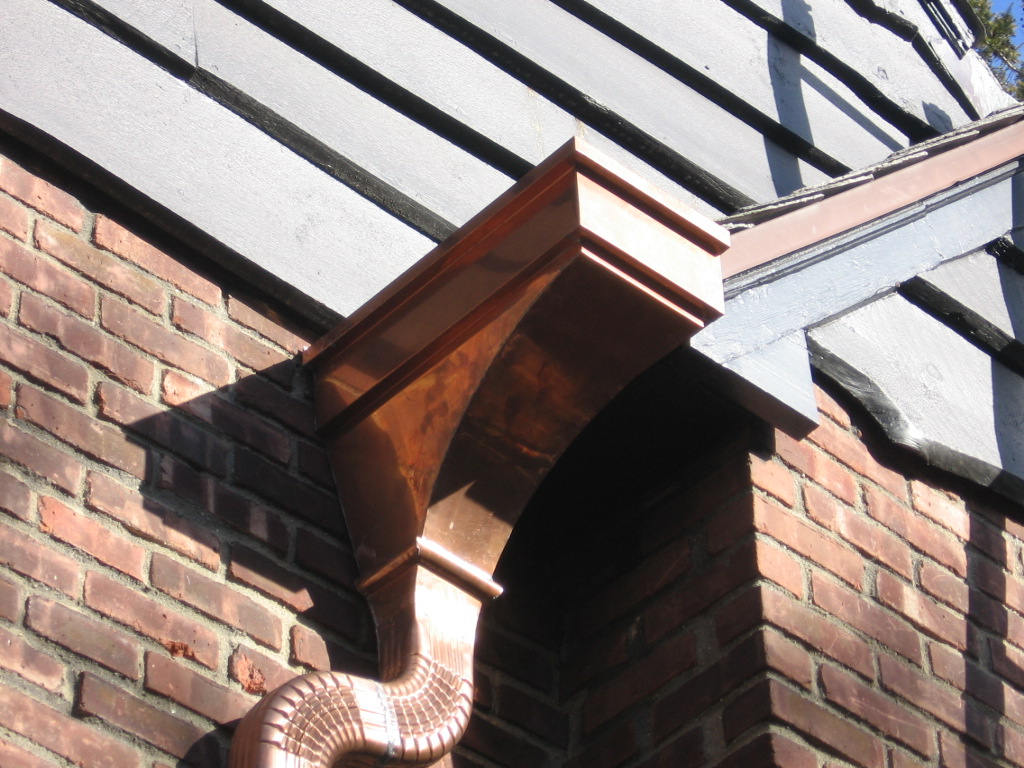
Built-in gutter systems are integrated within the cornice structure, connected to internal or external leaders, and are not readily visible. Built-in gutters are said to have been first adopted in North America during the 18th century in high-style Georgian and Federal-style buildings, usually public or commercial, where refined architectural qualities were desired. These hidden gutters also served an aesthetic purpose in buildings with grandiose compositions, classical orders, and elaborate cornices. The roof and cornice line are not only extremely important elements of the architectural character of these buildings, they also play a critical role in the water-shedding function of the exterior.
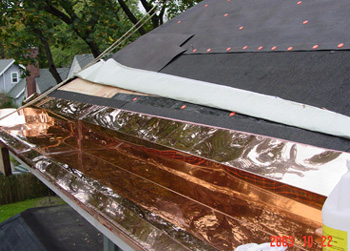 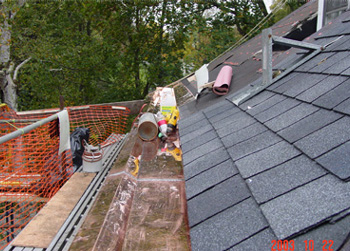

ABOVE: Built-in copper gutters (complete).
Mariani Restoration Roofing Co completed this job on a beautiful home in Scarsdale, NY
Historically, built-in gutters were constructed of wood boxes with sloped bottoms, lined with metal; the first metal linings were lead. Copper became available in America by the end of the 18th century and soon became popular for its durability. The integrity of the metal lining, flashings below the edge of the roof cladding, and cap flashings are critical to the performance of built-in gutters. A common sub-category of built-in gutter, also called a boxed gutter, eaves trough, or sunk gutter, cuts through the roof itself and is lined with metal.
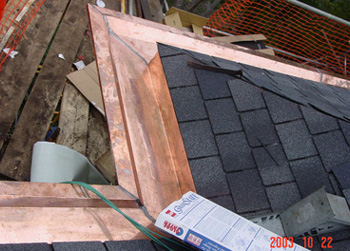 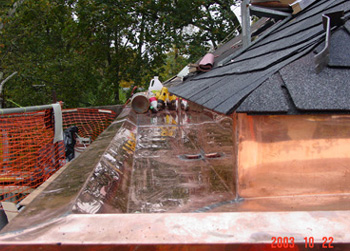
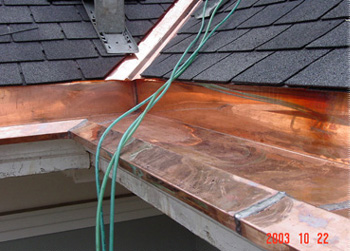 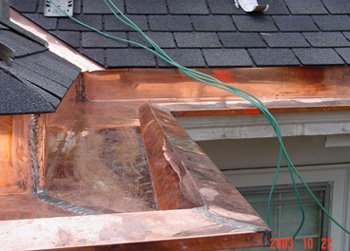

|
